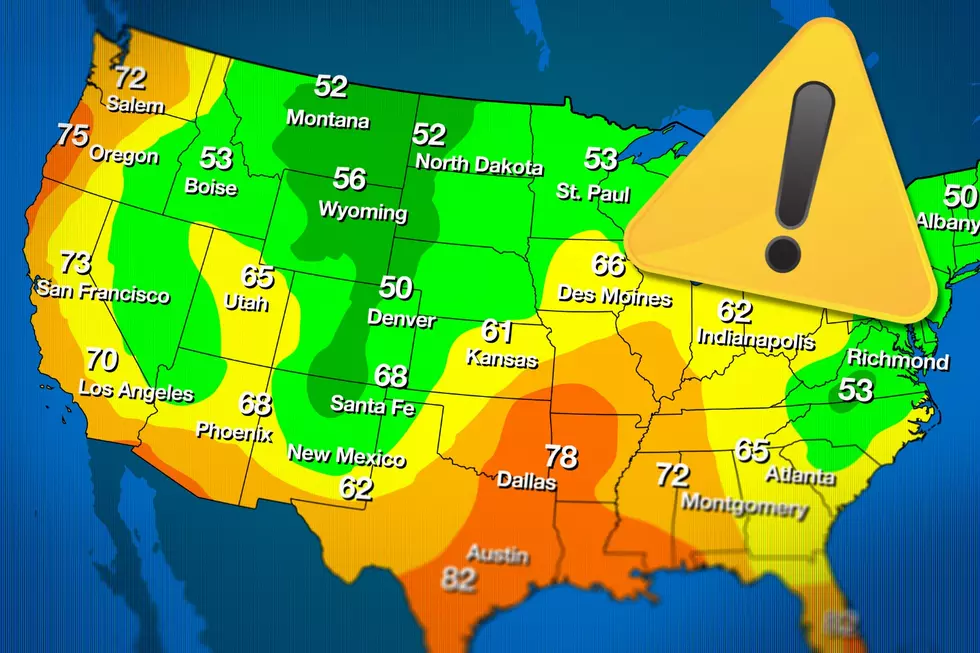
If You See This New Color on Weather Maps in Idaho, Stay Inside
It happens almost every summer. High school sports and other outdoor activities get canceled due to “unhealthy” air quality. You’ve lived in Idaho long enough that you’re extremely familiar with what the colors mean on air quality maps. Well, there’s a new color system that you should get familiar with before summer arrives
The way we remember it, last summer was fairly comfortable in Boise. We only experienced 11 triple digit days, which felt like a relief after a record shattering 27 triple digit days in 2022. But if you look at last year as a whole? The NOAA says that 2023 was Earth’s warmest year since global temperature records were established in 1850. In fact, if you look at their global temperature map from 2023, the Pacific Northwest was one of the only areas in the world that saw below average temperatures.
The United States Department of Health and Human Services explains that in a typical year, about 702 Americans die from heat-related illness. In 2023, Phoenix alone saw more than 560 people die during a heatwave. The Texas Tribune reports that more than 300 people in the Lonestar State died due to extreme heat, too.
READ MORE: 11 Things You Should Never Leave in Your Car on a Hot Idaho Day
That’s why the National Oceanic and Atmospheric Administration and CDC are teaming up for a new experimental HeatRisk map in 2024. The whole goal is to provide a forecast of how dangerous heat could impact activities over a 24-hour period. To make that forecast, they look at how unusual the temperature is for the time of year, the duration of heat during the day and night and if the temperatures could post a risk of heat-related impacts based on data from the CDC.
The map officially debuted at the beginning of May and the forecast is shown using a color system similar to the one you know for air quality. The colors are green, yellow, orange, red and magenta.
Stay Inside If You See This Color on the HeatRisk Map
Traditionally, people think that the color red represents the worst case scenario on weather maps, magenta is the worst color on the HeatRisk Map. Magenta means “extreme” which the NOAA describes as:
This level of rare and/or long-duration extreme heat with little to no overnight relief affects anyone without effective cooling and/or adequate hydration. Impacts likely in most health systems, heat-sensitive industries and infrastructure.
In other words, in the event that Boise DOES end up in the magenta at some point this summer, these are the days that you’ll want to skip that afternoon walk on the Greenbelt. Stay inside and enjoy the AC. Wear light-colored and light weight clothes if you have to be outside and keep yourself as hydrated as possible.

As you’re watching your hydration, make sure you’re getting the proper amount of electrolytes, too. This author is prone to heat-related illness and once washed all the salt out of her body by drinking nothing but water leading up to an evening cross country race on a hot day. She collapsed at the finish line. 0/5 stars. Do not recommend.
11 Things You Should Never Leave in Your Car on a Hot Idaho Day
Gallery Credit: Michelle Heart
5 of the World's Most Deadly Insects Are in Idaho Right Now
Gallery Credit: Michelle Heart
5 of the World's Most Deadly Insects Are in Idaho Right Now
Gallery Credit: Michelle Heart
More From Idaho’s Talk Station








![Spirit of Boise Balloon Classic Preview [Photos]](http://townsquare.media/site/658/files/2016/08/Oli-Scarff.jpg?w=980&q=75)
